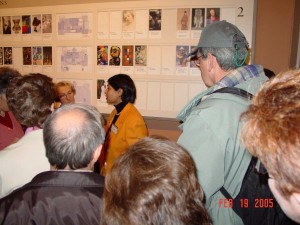History of the Metropolitan Museum of Art
My Highlights Tour of the Metropolitan Museum of Art begins at the “Clock” in the Main Hall where visitors assemble at the start of every guided tour. This is where I give my visitors a short introduction to the history of the Metropolitan Museum.
The Metropolitan Museum of Art was founded in the last quarter of the nineteenth century, at a time when Americans, particularly New Yorkers, were making vast sums of money in business and private enterprise. They were traveling frequently to Europe and becoming introduced to the world’s great art collections in Royal Palaces and felt that the time was ripe to found a museum in New York through which they might become better educated about Art and be able to acquire it for their own personal collections.
The construction of the Museum was started in 1870. Over the next decade, it slowly took shape according to the principles of Neo-Classical architectural design. Borrowing from the Classical architecture of Greece and Rome, this style is exemplified by broad staircases, grand halls, cupolas and domes, elegant arches and pillars in the Doric, Ionic and Corinthian styles. There is also a great deal of ornamental moulding to be seen particiularly along the grand staircase with its solid balustrades that lead to the second floor. In which stairwell, one might also see some fabulous examples of stone carvings in bas-relief.
Over the next 130 years, the Museum expanded rapidly as its impressive collection grew. As architects in the twentieth century envisioned the museum, its design became far more Modernist, indeed even Futuristic. The newer sections in the museum certainly reflect this changing archictectural aesthetic and we shall pause to reflect on the interior spaces as we move through the museum’s various sections. Today we have 13 square miles of gallery space and at least 3 million objects on display at any given time. We also place on display significant items for a limited time from the world’s other art museums during our special exhibitions and often loan out parts of our collection to traveling exhibits overseas. The museum is fully equipped with its own libraries that offer endless research possibilities for art historicans, scholars and curators and a large number of education programs exist to better inform the general public about the fascinating world of Art and Collecting.
The flower arrangement in the center of the Main Hall and the four supplementary arrangements that flank it come to us as a lifetime’s endowment from the Lila Acherson Wallace Foundation and the Readers Digest Corporation. For as long as the museum stands, we will continue to receive the money that permits us to change the arrangement once a week on Monday when the museum is closed to the public. The arrangements superbly reflect the changing seasons through the ingenious use of flowers and foliage.
Come with me now on a tour of some of the most prestigious items in the Metropolitan Museum’s permanent collection.
Click here to get to the European Paintings section to see The Death of Socrates by Jacques-Louis David.
